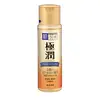What's inside
What's inside
 Key Ingredients
Key Ingredients

 Benefits
Benefits

 Concerns
Concerns

No concerns
 Ingredients Side-by-side
Ingredients Side-by-side

Water
Skin ConditioningButylene Glycol
HumectantGlycerin
HumectantPPG-10 Methyl Glucose Ether
Skin ConditioningHydroxyethyl Urea
HumectantSodium Acetylated Hyaluronate
HumectantSodium Hyaluronate
HumectantHydrolyzed Hyaluronic Acid
HumectantHydroxypropyltrimonium Hyaluronate
Sodium Hyaluronate Crosspolymer
HumectantAphanothece Sacrum Polysaccharide
AbsorbentHydrogenated Starch Hydrolysate
HumectantGlycosyl Trehalose
Emulsion StabilisingDiglycerin
HumectantSorbitol
HumectantPentylene Glycol
Skin ConditioningTriethyl Citrate
MaskingCarbomer
Emulsion StabilisingPolyquaternium-51
Skin ConditioningPEG-32
HumectantPEG-75
HumectantAmmonium Acrylates Copolymer
Disodium EDTA
Potassium Hydroxide
BufferingDiethoxyethyl Succinate
SolventDisodium Succinate
MaskingSuccinic Acid
BufferingPhenoxyethanol
PreservativeMethylparaben
PreservativeWater, Butylene Glycol, Glycerin, PPG-10 Methyl Glucose Ether, Hydroxyethyl Urea, Sodium Acetylated Hyaluronate, Sodium Hyaluronate, Hydrolyzed Hyaluronic Acid, Hydroxypropyltrimonium Hyaluronate, Sodium Hyaluronate Crosspolymer, Aphanothece Sacrum Polysaccharide, Hydrogenated Starch Hydrolysate, Glycosyl Trehalose, Diglycerin, Sorbitol, Pentylene Glycol, Triethyl Citrate, Carbomer, Polyquaternium-51, PEG-32, PEG-75, Ammonium Acrylates Copolymer, Disodium EDTA, Potassium Hydroxide, Diethoxyethyl Succinate, Disodium Succinate, Succinic Acid, Phenoxyethanol, Methylparaben
Water
Skin ConditioningPolyacrylate Crosspolymer-6
Emulsion StabilisingGlycereth-7 Triacetate
EmollientPanthenol
Skin ConditioningGlycerin
HumectantSodium Hyaluronate
HumectantHydroxypropyltrimonium Hyaluronate
Hydrolyzed Hyaluronic Acid
HumectantSodium Acetylated Hyaluronate
HumectantHyaluronic Acid
HumectantSodium Hyaluronate Crosspolymer
HumectantHydrolyzed Sodium Hyaluronate
Skin ConditioningPotassium Hyaluronate
Skin ConditioningBiosaccharide Gum-1
HumectantPoria Cocos Polysaccharide
Skin ConditioningChondrus Crispus Extract
Skin Conditioning1,2-Hexanediol
Skin ConditioningCaprylyl Glycol
EmollientButylene Glycol
HumectantSodium Levulinate
Skin ConditioningGlyceryl Caprylate
EmollientSodium Anisate
AntimicrobialXanthan Gum
EmulsifyingGluconolactone
Skin ConditioningSodium Gluconate
Skin ConditioningSodium Benzoate
MaskingPotassium Sorbate
PreservativeCalcium Gluconate
HumectantCitric Acid
BufferingWater, Polyacrylate Crosspolymer-6, Glycereth-7 Triacetate, Panthenol, Glycerin, Sodium Hyaluronate, Hydroxypropyltrimonium Hyaluronate, Hydrolyzed Hyaluronic Acid, Sodium Acetylated Hyaluronate, Hyaluronic Acid, Sodium Hyaluronate Crosspolymer, Hydrolyzed Sodium Hyaluronate, Potassium Hyaluronate, Biosaccharide Gum-1, Poria Cocos Polysaccharide, Chondrus Crispus Extract, 1,2-Hexanediol, Caprylyl Glycol, Butylene Glycol, Sodium Levulinate, Glyceryl Caprylate, Sodium Anisate, Xanthan Gum, Gluconolactone, Sodium Gluconate, Sodium Benzoate, Potassium Sorbate, Calcium Gluconate, Citric Acid
 Reviews
Reviews

Ingredients Explained
These ingredients are found in both products.
Ingredients higher up in an ingredient list are typically present in a larger amount.
Butylene Glycol (or BG) is used within cosmetic products for a few different reasons:
Overall, Butylene Glycol is a safe and well-rounded ingredient that works well with other ingredients.
Though this ingredient works well with most skin types, some people with sensitive skin may experience a reaction such as allergic rashes, closed comedones, or itchiness.
Learn more about Butylene GlycolGlycerin is already naturally found in your skin. It helps moisturize and protect your skin.
A study from 2016 found glycerin to be more effective as a humectant than AHAs and hyaluronic acid.
As a humectant, it helps the skin stay hydrated by pulling moisture to your skin. The low molecular weight of glycerin allows it to pull moisture into the deeper layers of your skin.
Hydrated skin improves your skin barrier; Your skin barrier helps protect against irritants and bacteria.
Glycerin has also been found to have antimicrobial and antiviral properties. Due to these properties, glycerin is often used in wound and burn treatments.
In cosmetics, glycerin is usually derived from plants such as soybean or palm. However, it can also be sourced from animals, such as tallow or animal fat.
This ingredient is organic, colorless, odorless, and non-toxic.
Glycerin is the name for this ingredient in American English. British English uses Glycerol/Glycerine.
Learn more about GlycerinHydrolyzed Hyaluronic Acid is a form of hyaluronic acid. It is created by the hydrolysis of hyaluronic acid with a high molecular weight. Once created, Hydrolyzed Hyaluronic Acid has a low molecular weight.
Low molecular weight HA has been shown to hydrate and increase elasticity of the skin. Increasing elasticity is also associated with reduction of wrinkle depth.
One study found topical low molecular weight hyaluronic acid may be considered for the treatment of rosacea in the adult population. However, we always recommend speaking with a professional about your skin concerns.
Hyaluronic acids are a humectant. This means they draw moisture from the air. Hyaluronic acids help moisturize, soothe, and protect the skin.
Read more about other common forms of hyaluronic acid:
Learn more about Hydrolyzed Hyaluronic AcidThis form of hyaluronic acid is produced through fermentation.
According to a manufacturer, it has a positive charge by ionic binding to help moisturize and give hair a smooth feel. This is why you'll find this ingredient in shampoos and body washes.
Sodium Acetylated Hyaluronate is a type of Hyaluronic Acid.
Hyaluronic Acids help moisturize, soothe, and protect the skin.
Read about common types of Hyaluronic Acid here:
Sodium Hyaluronate
Hydrolyzed Hyaluronic Acid
Hyaluronic Acid
Sodium Hyaluronate is hyaluronic acid's salt form. It is commonly derived from the sodium salt of hyaluronic acid.
Like hyaluronic acid, it is great at holding water and acts as a humectant. This makes it a great skin hydrating ingredient.
Sodium Hyaluronate is naturally occurring in our bodies and is mostly found in eye fluid and joints.
These are some other common types of Hyaluronic Acid:
Learn more about Sodium HyaluronateSodium Hyaluronate Crosspolymer is a type of hyaluronic acid. In fact, it is modified version of hyaluronic acid.
The structure of Sodium Hyaluronate Crosspolymer allows it to stay in the skin's top layer for a longer period of time. This allows for even more hydration and humectant action than hyaluronic acid.
These are some other common types of Hyaluronic Acid:
Learn more about Sodium Hyaluronate CrosspolymerWater. It's the most common cosmetic ingredient of all. You'll usually see it at the top of ingredient lists, meaning that it makes up the largest part of the product.
So why is it so popular? Water most often acts as a solvent - this means that it helps dissolve other ingredients into the formulation.
You'll also recognize water as that liquid we all need to stay alive. If you see this, drink a glass of water. Stay hydrated!
Learn more about Water